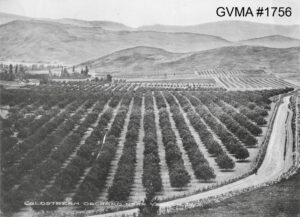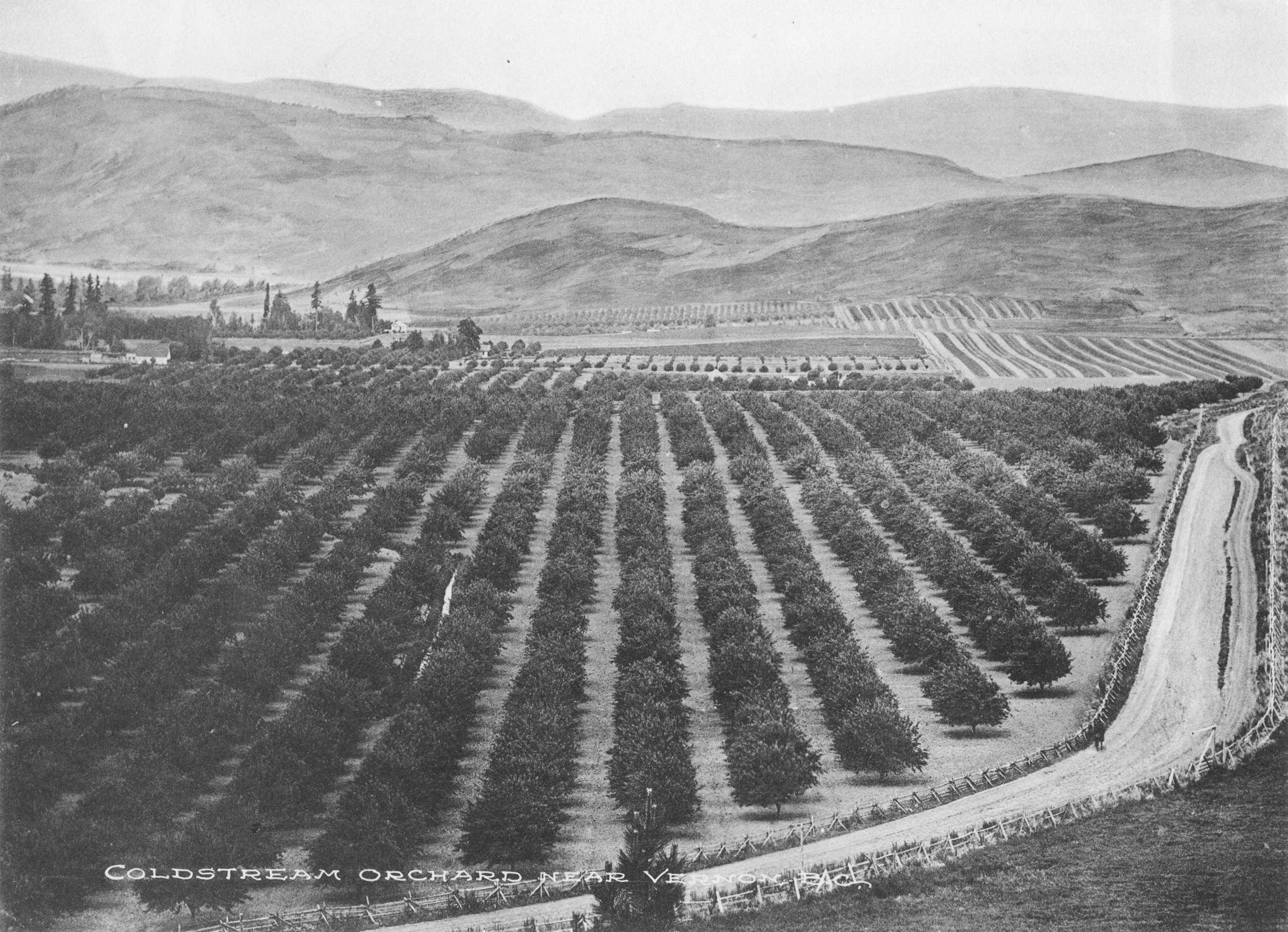Picture the Okanagan without its expansive fruit orchards. No juicy peaches and sweet cherries in the summer, and no crisp apples and tart grapes in the autumn?
It is almost painful to imagine!
But this was the reality of life in the Okanagan before the advent of irrigation.
At the turn of the 20th century, the valley was too hot and dry to support much agriculture.
The manager of the Coldstream Ranch, W.C. Ricardo, proposed Aberdeen Lake on the highlands to the southeast of Vernon as a potential water source to irrigate thirsty crops.
Water flowing out of the lake via Jones (now Duteau) creek, he argued, could be diverted south by canal to supply orchard and fields in White Valley (now Lavington) and the Coldstream Ranch.

This water even had the potential to be directed north across the ranch to irrigate the BX and beyond.
The White Valley Irrigation and Power Company beginning this momentous task in 1906 with the construction of the Grey Canal.
The introduction of water via the Grey Canal changed the industry of the valley from ranching and the cultivation of cereals to the production of fruits like apples, pears, and cherries. The advent of orchards across the Okanagan helped to greatly stimulate the economy, but these plants also came with higher water demands.
The Grey Canal was completed in 1914. At one time, it supplied water to the largest irrigation district in BC, and delivered more water than the system that supplied to the City of Vancouver. If you’d like to learn more about the Grey Canal, please check out Peter Tassie’s Water from the Hillspublished by the Okanagan Historical Society.
The climate of the Valley hasn’t changed. We still live in a dry belt that, particularly during the summer, receives little water. And we certainly can’t go back to the way things were before the advent of the fruit industry. Our orchards are as much are part of our identity in the Okanagan as our emerald lakes and delicious wine.
Each of us can ensure that water is not being wasted and instead reserved for vital tasks. Indeed, the average Okanagan citizen uses 675 litres of water each day! This is more than twice as much water as the average Canadian.
To reduce water usage, citizens of the Okanagan can try xeriscaping, a style of gardening that utilizes plants with low water needs that thrive naturally in the Valley’s dry environment. Some great tips about how to xeriscape in the Okanagan can be found here.
It is also important to ensure that one’s water consumption is as low as possible, particularly during drought periods. Watering plants in the evening or early morning can help to reduce evaporation. A list of current water restrictions can be found online through Greater Vernon Water.
Visit the website Okanagan WaterWise for more tips, as well as the Okanagan Xeriscape Association’s plan list aunt other helpful lawn and garden care tips in the WaterWise Landscape Irrigation Handbook.
Gwyn Evans

